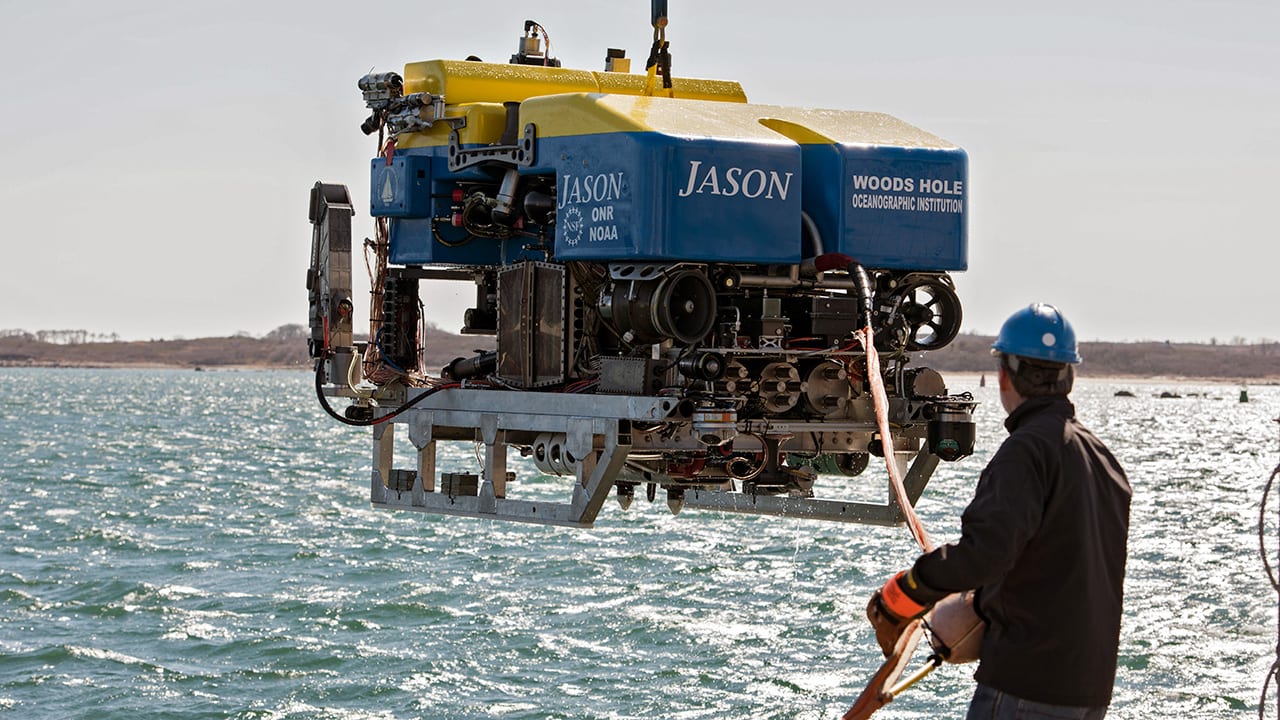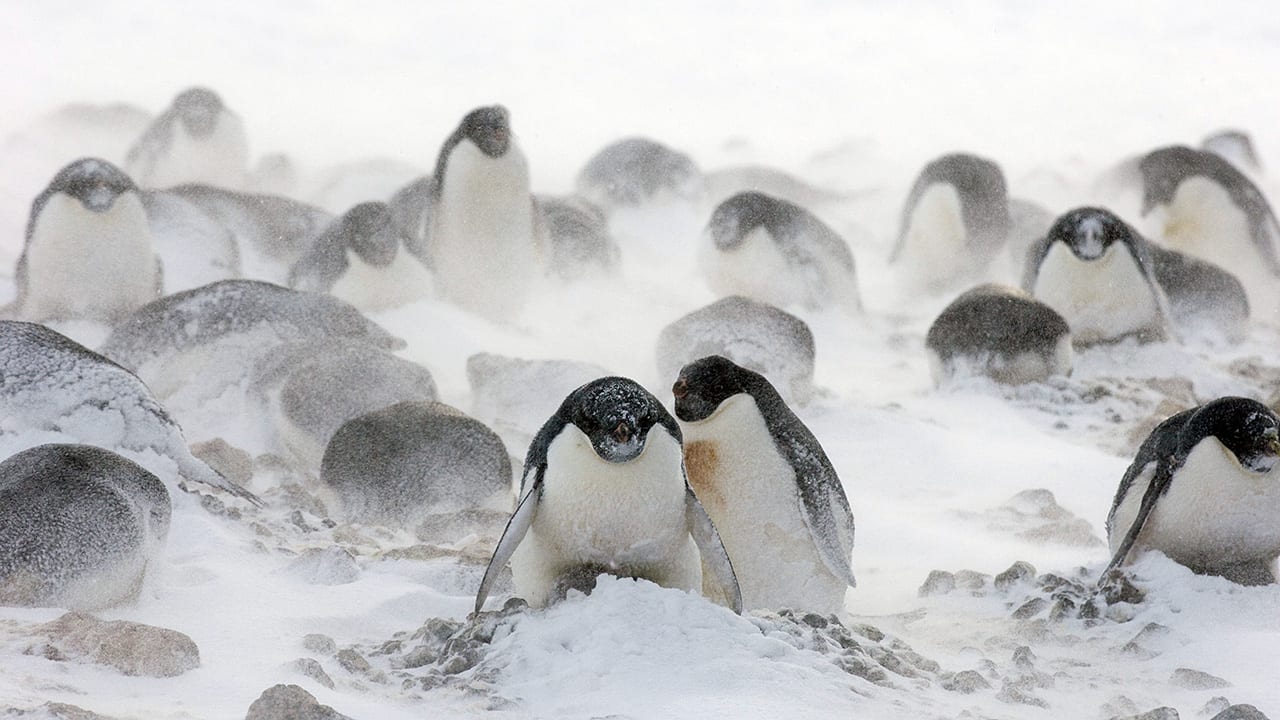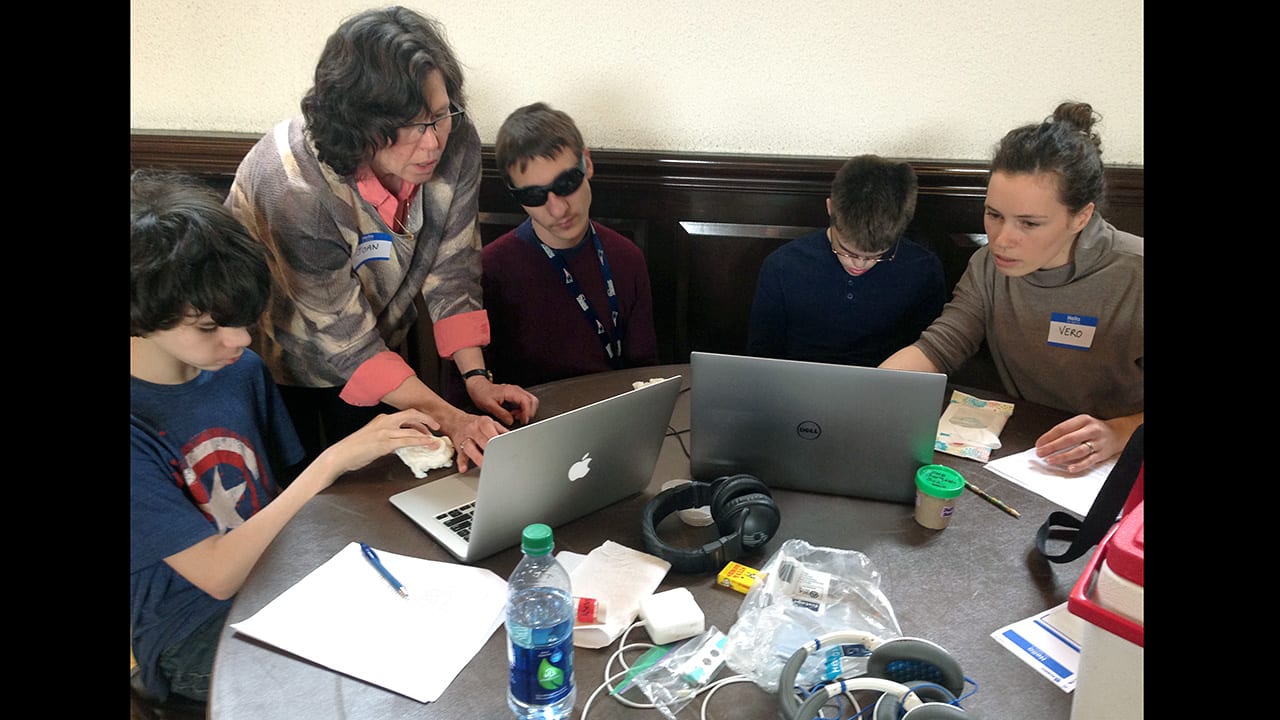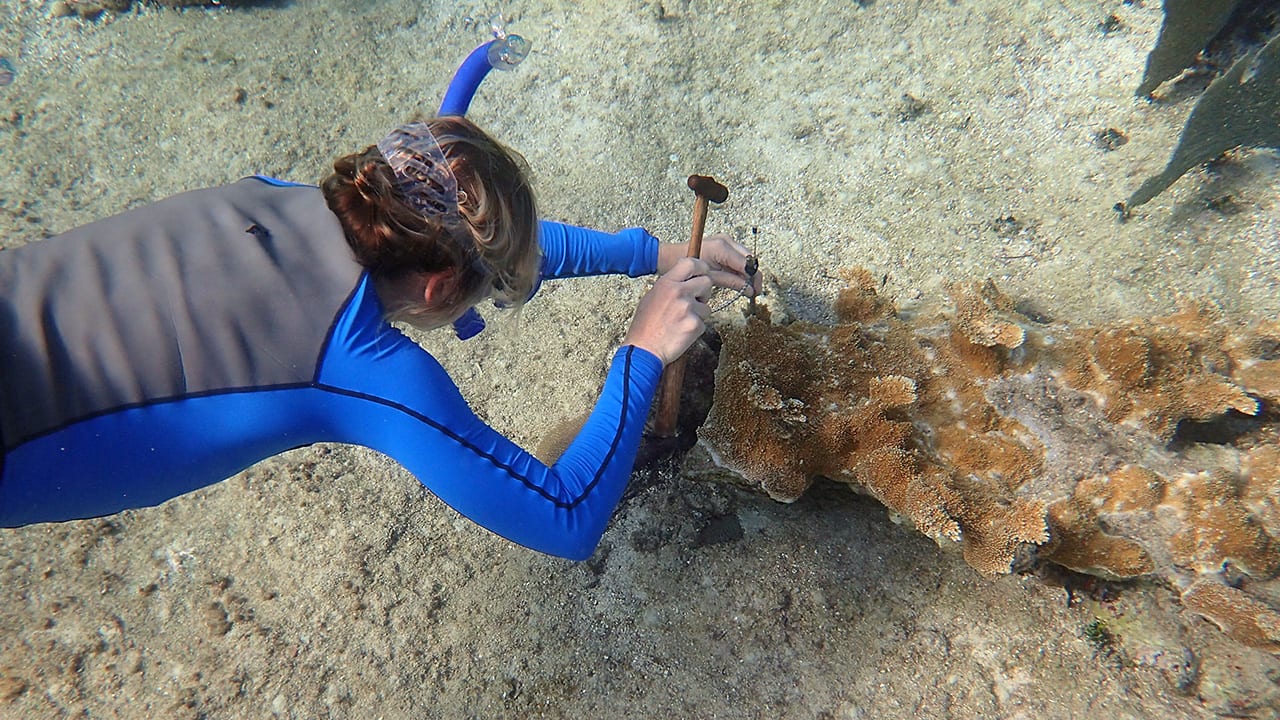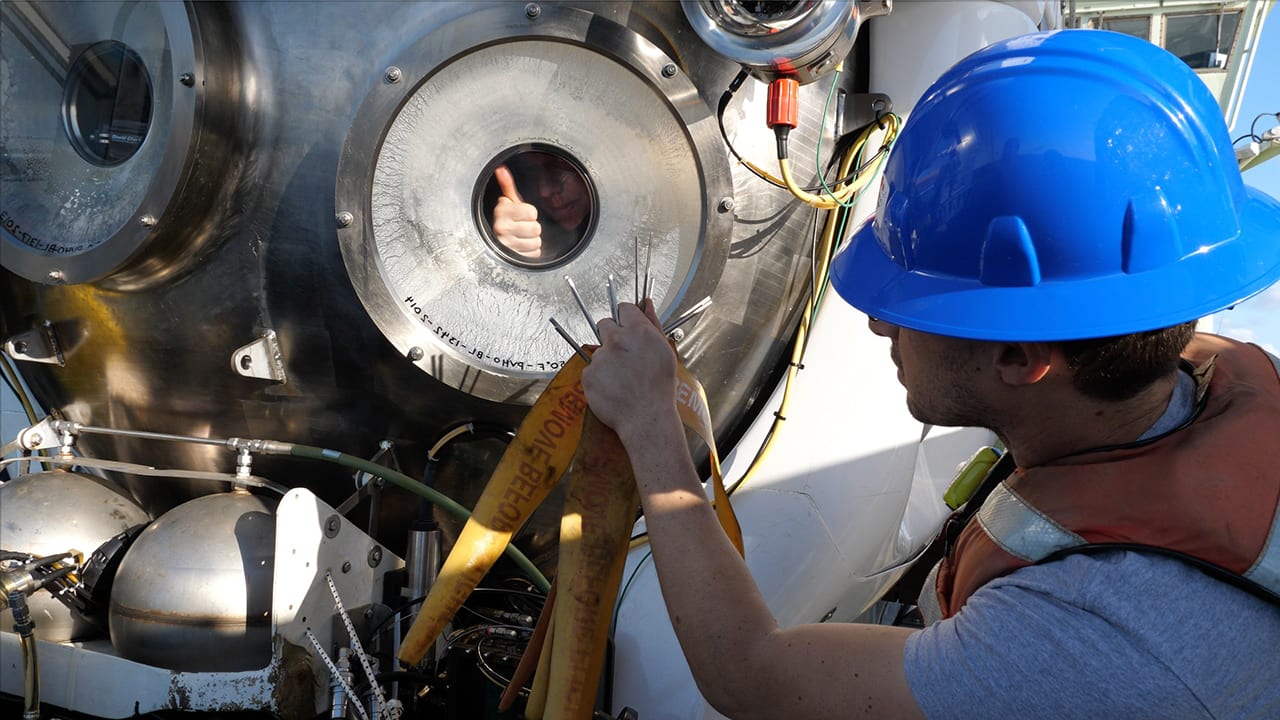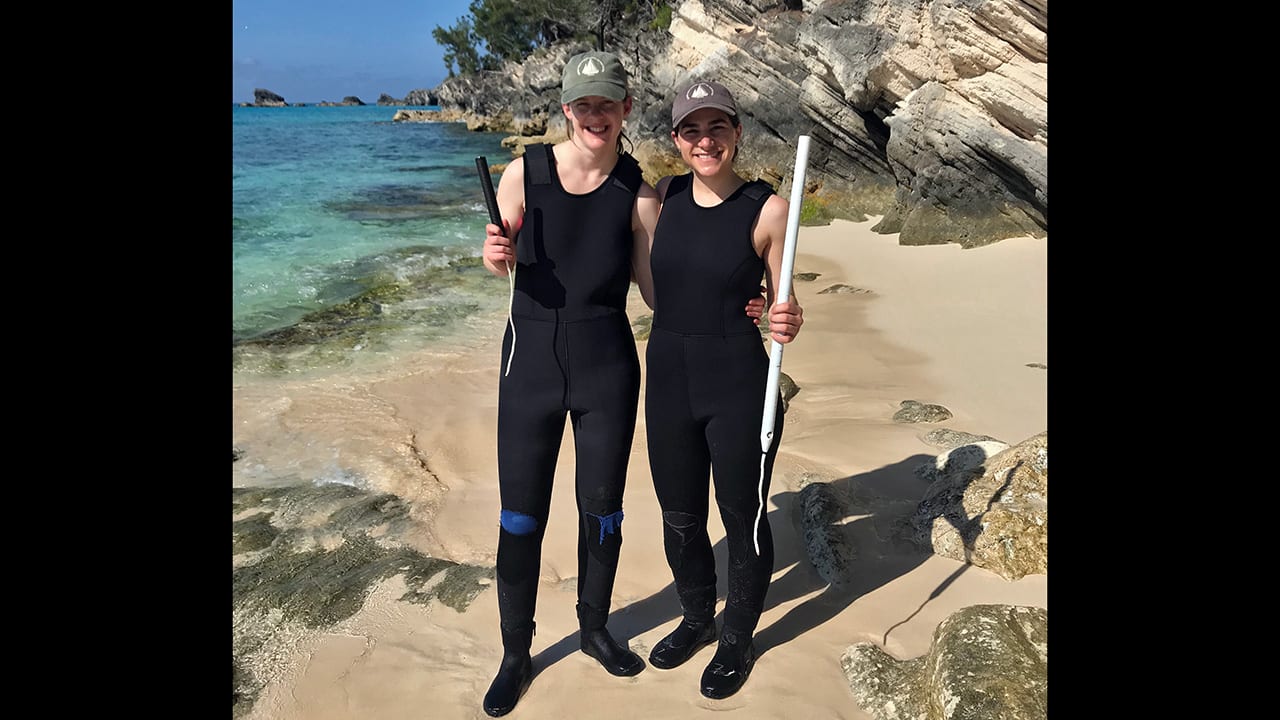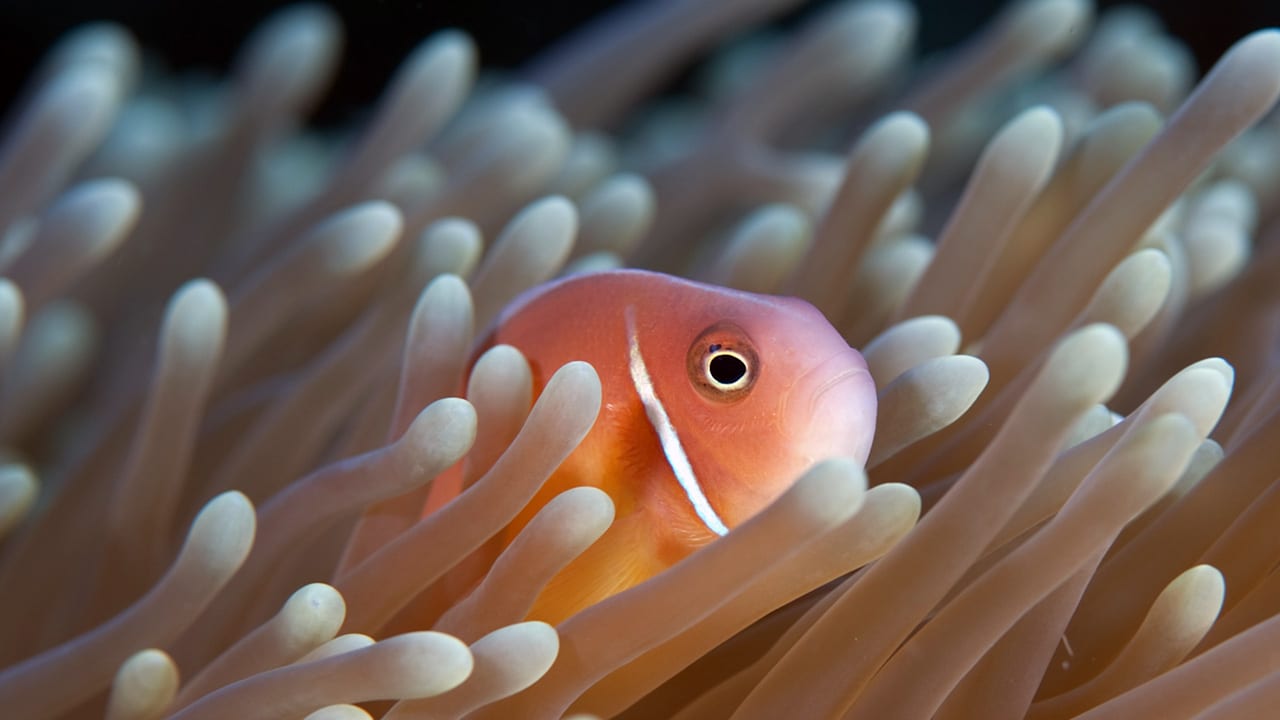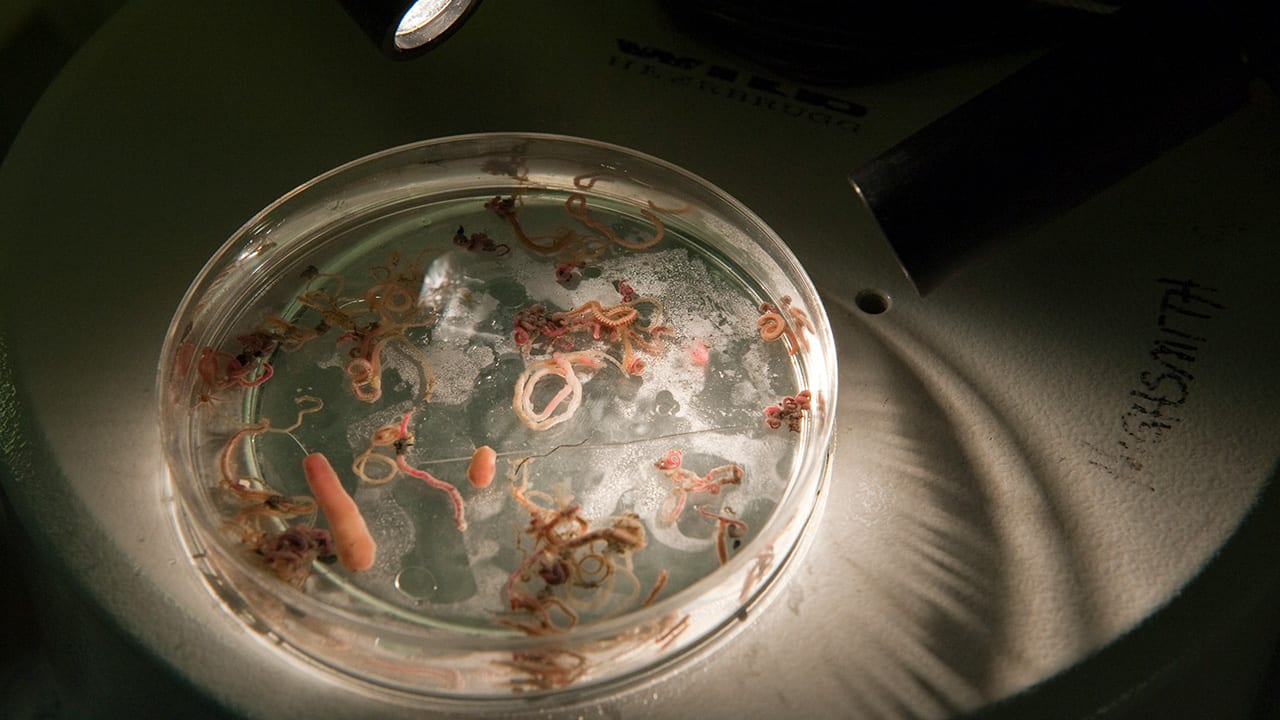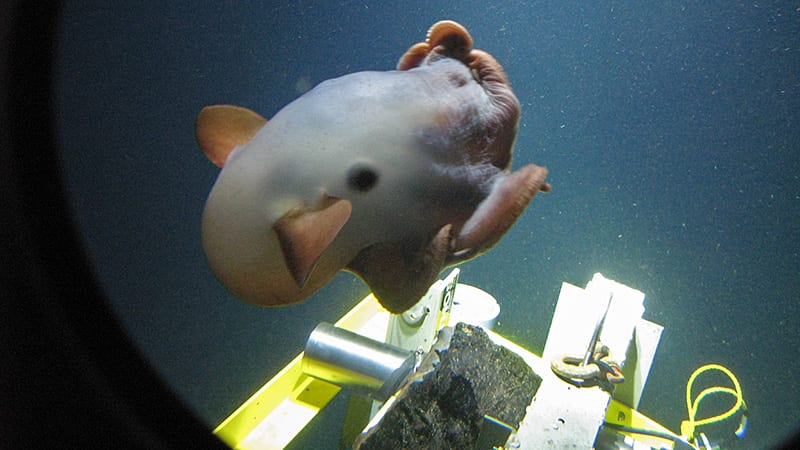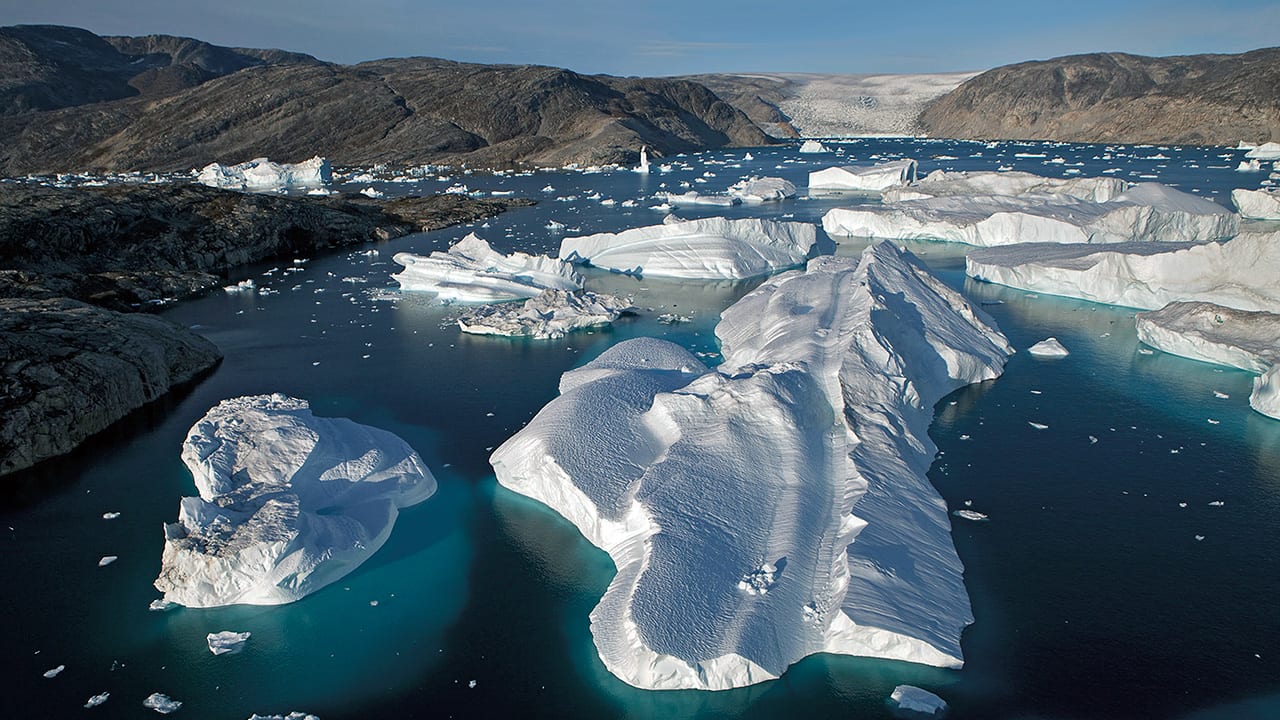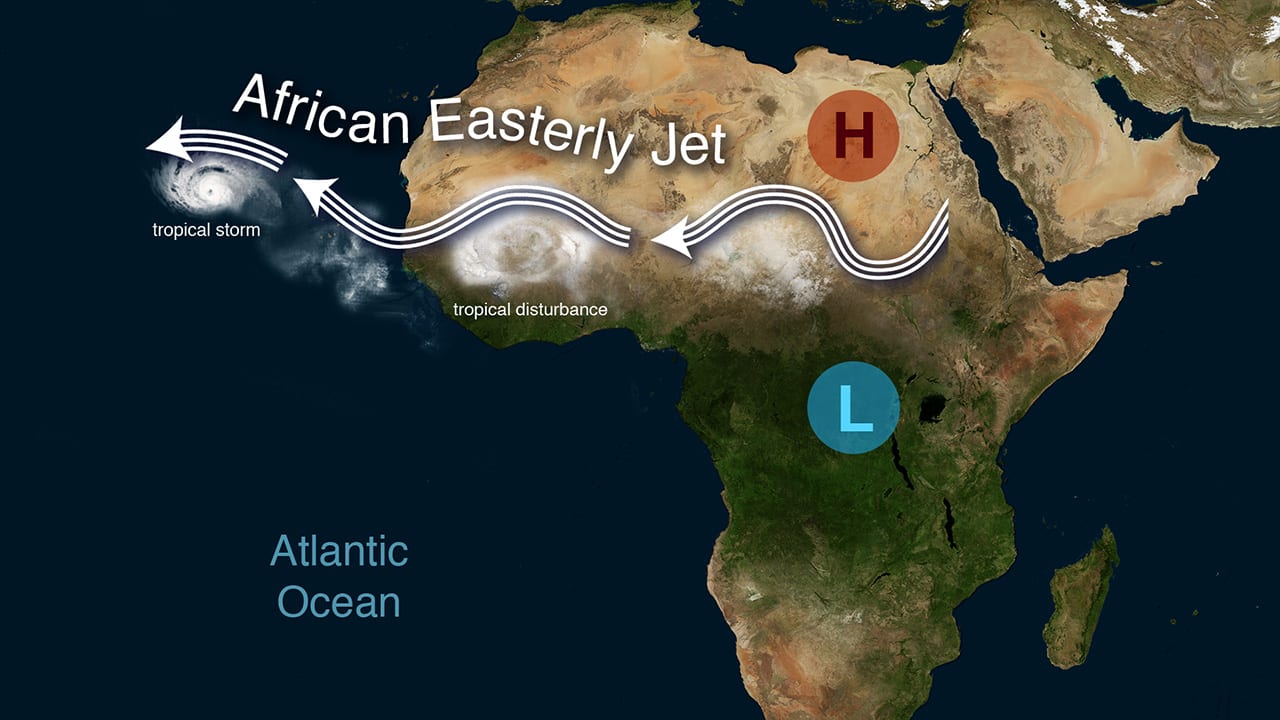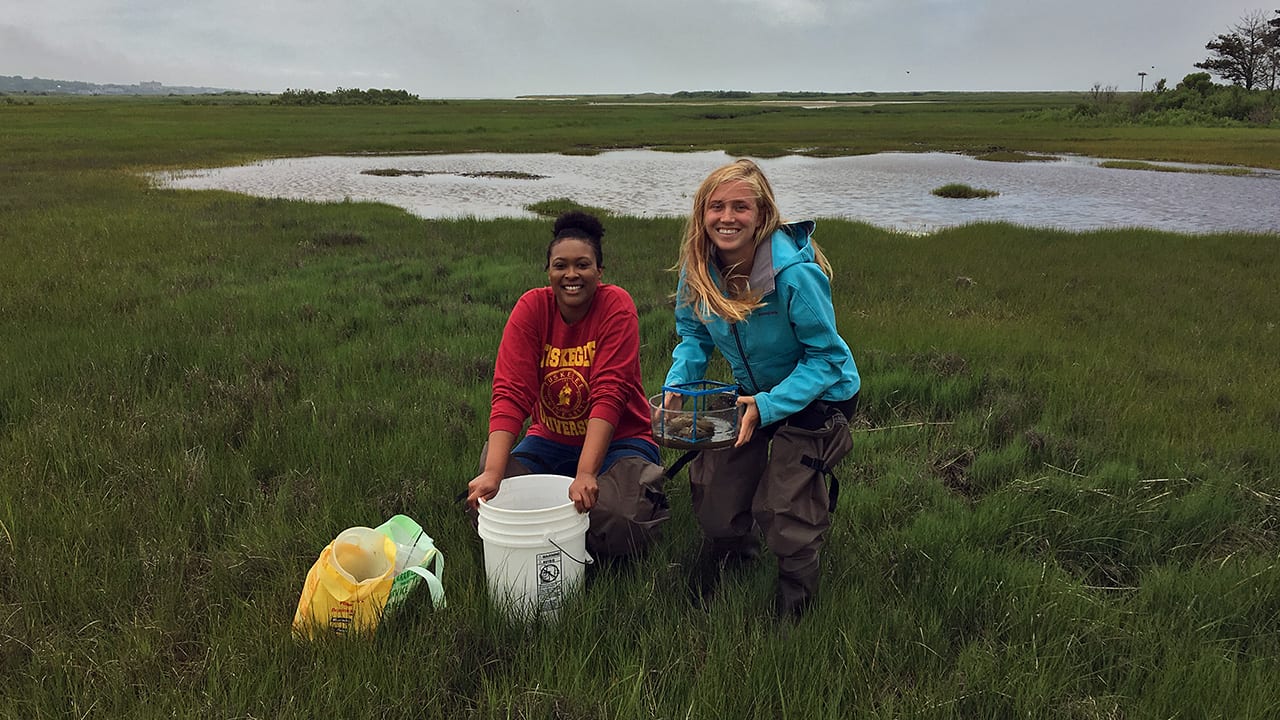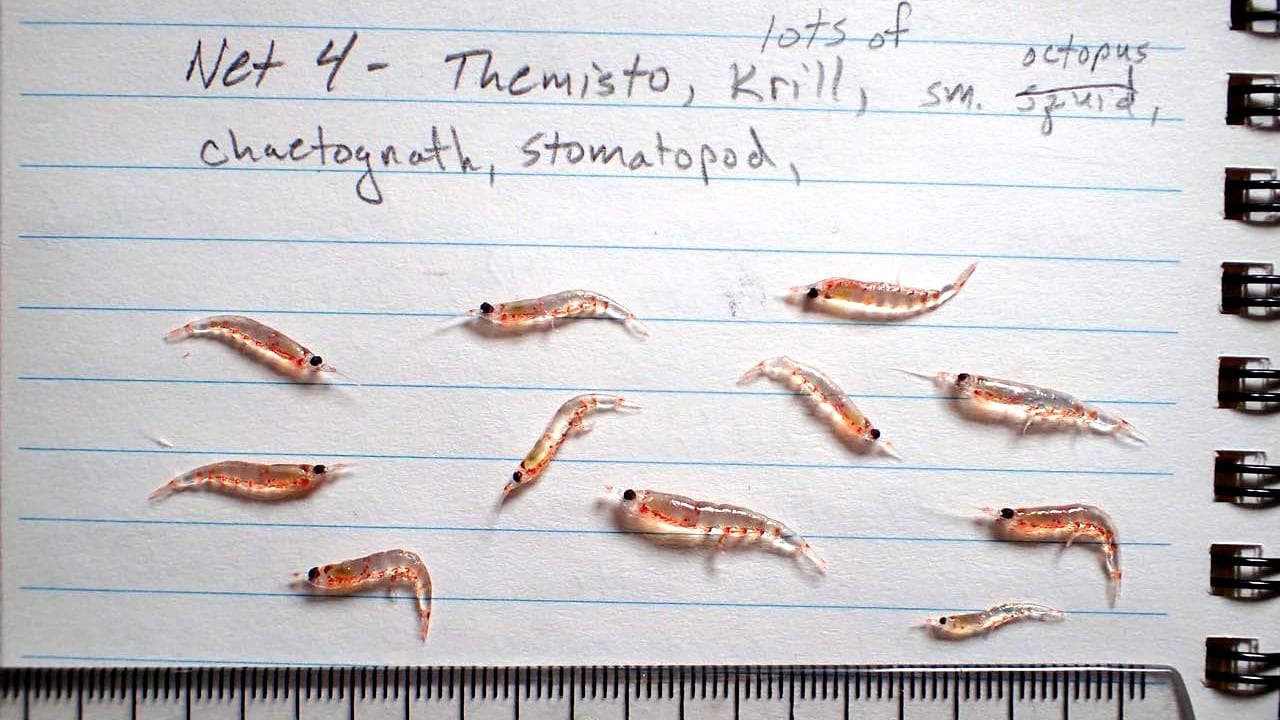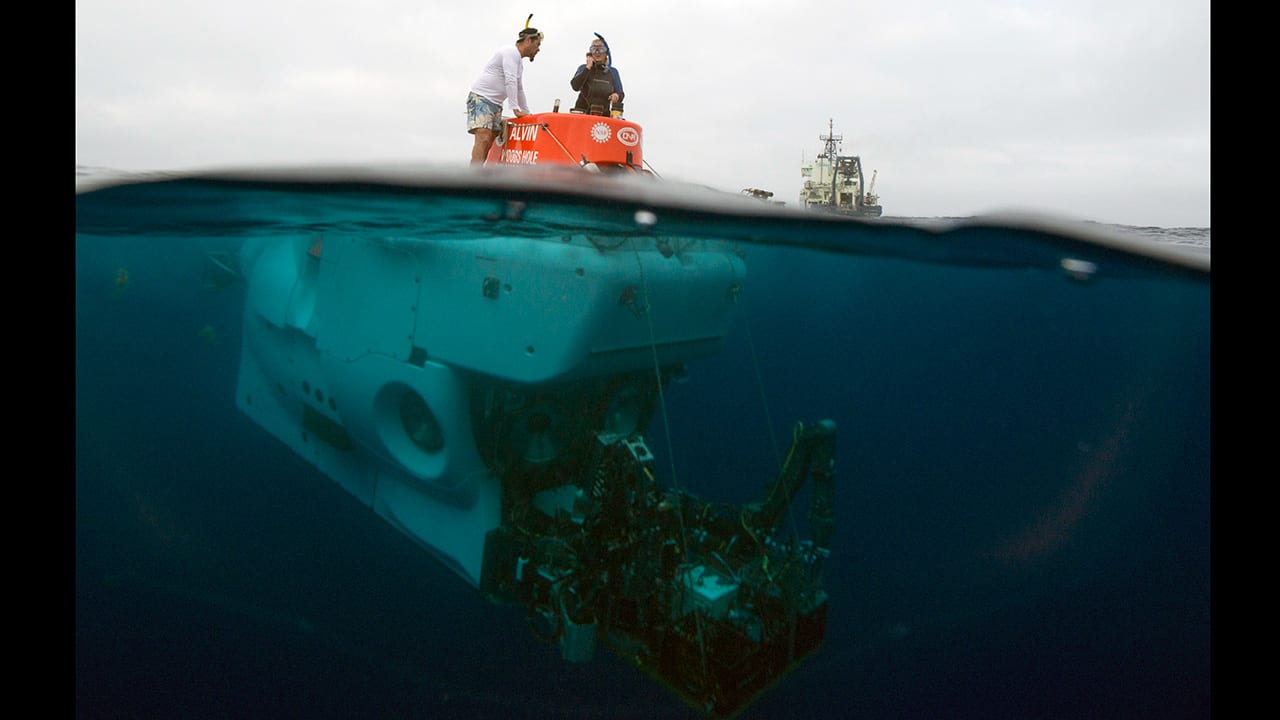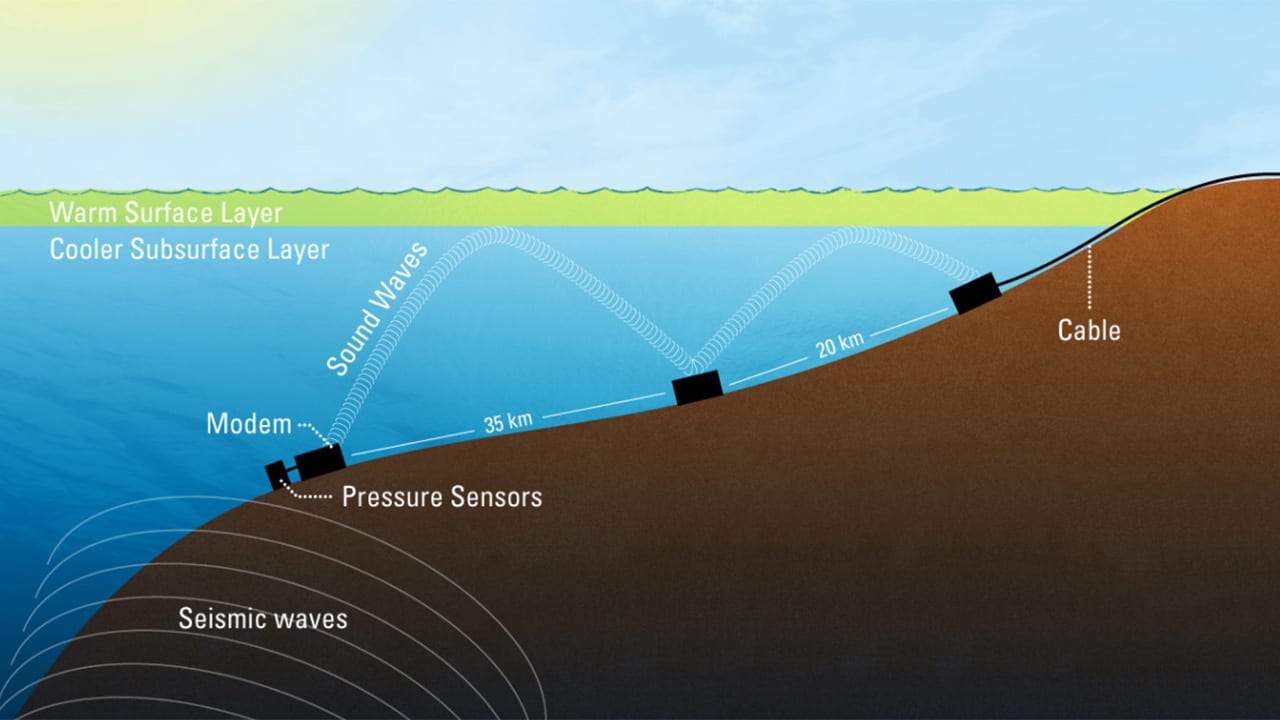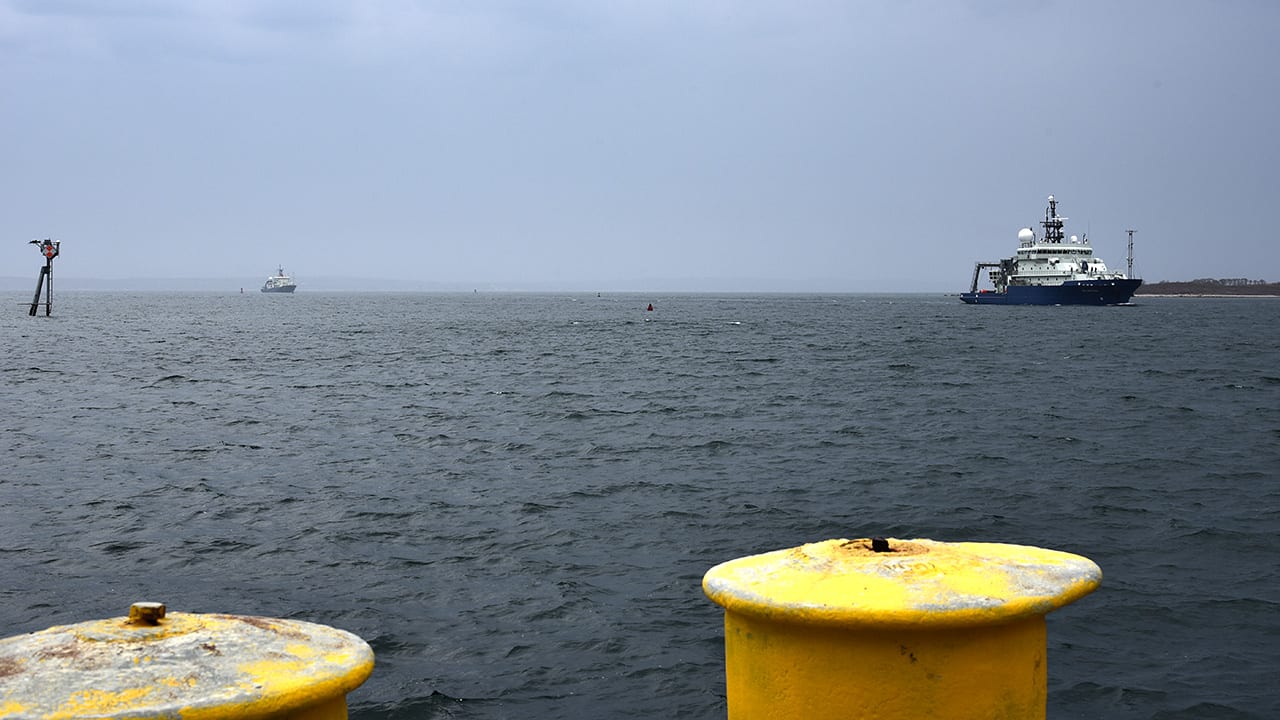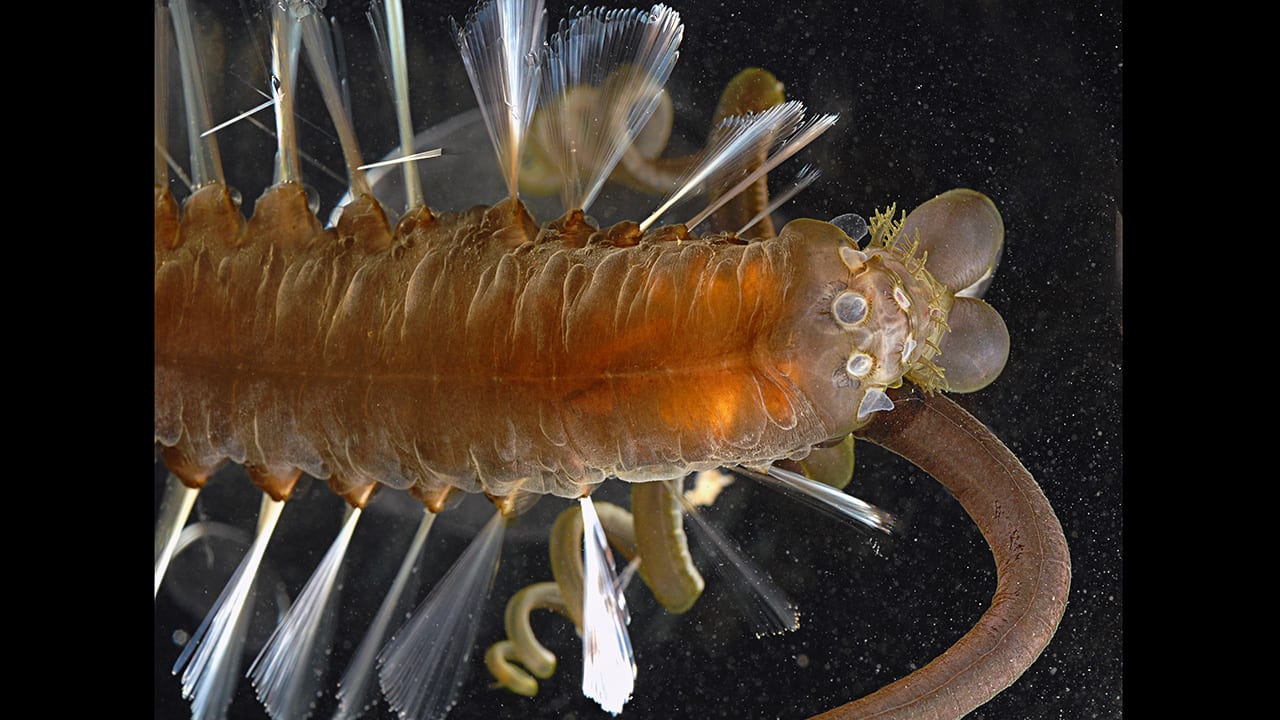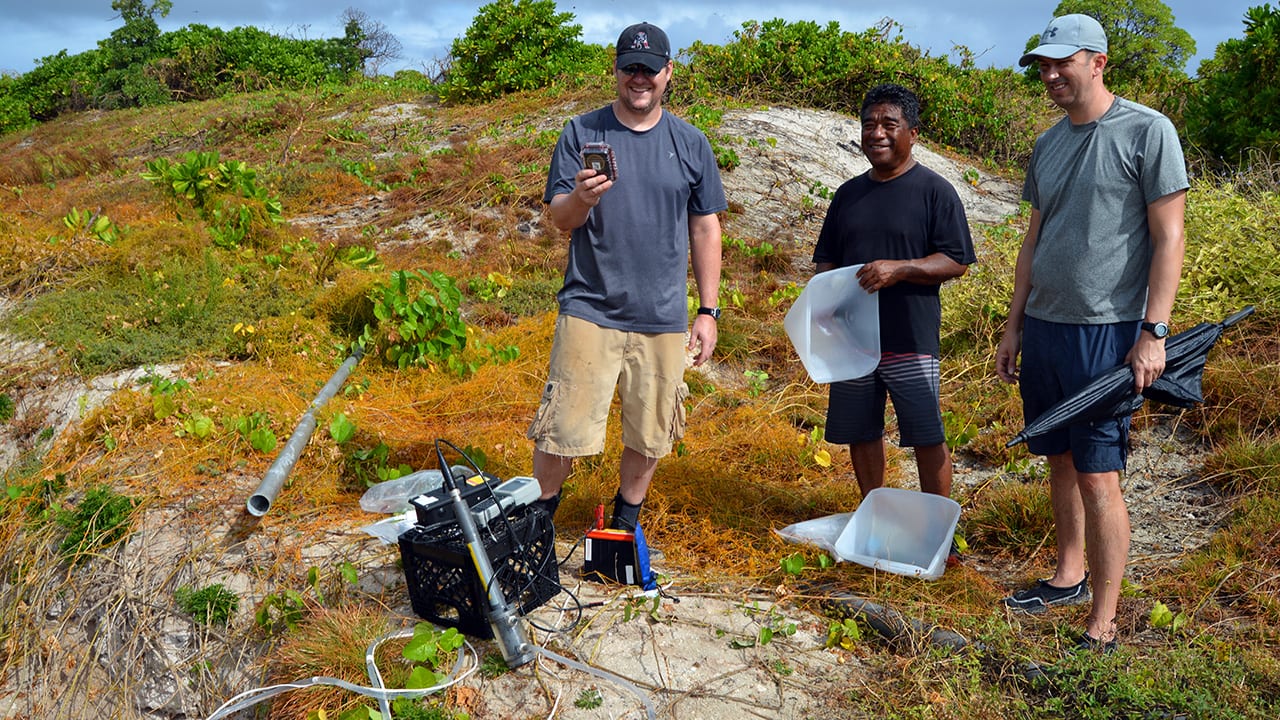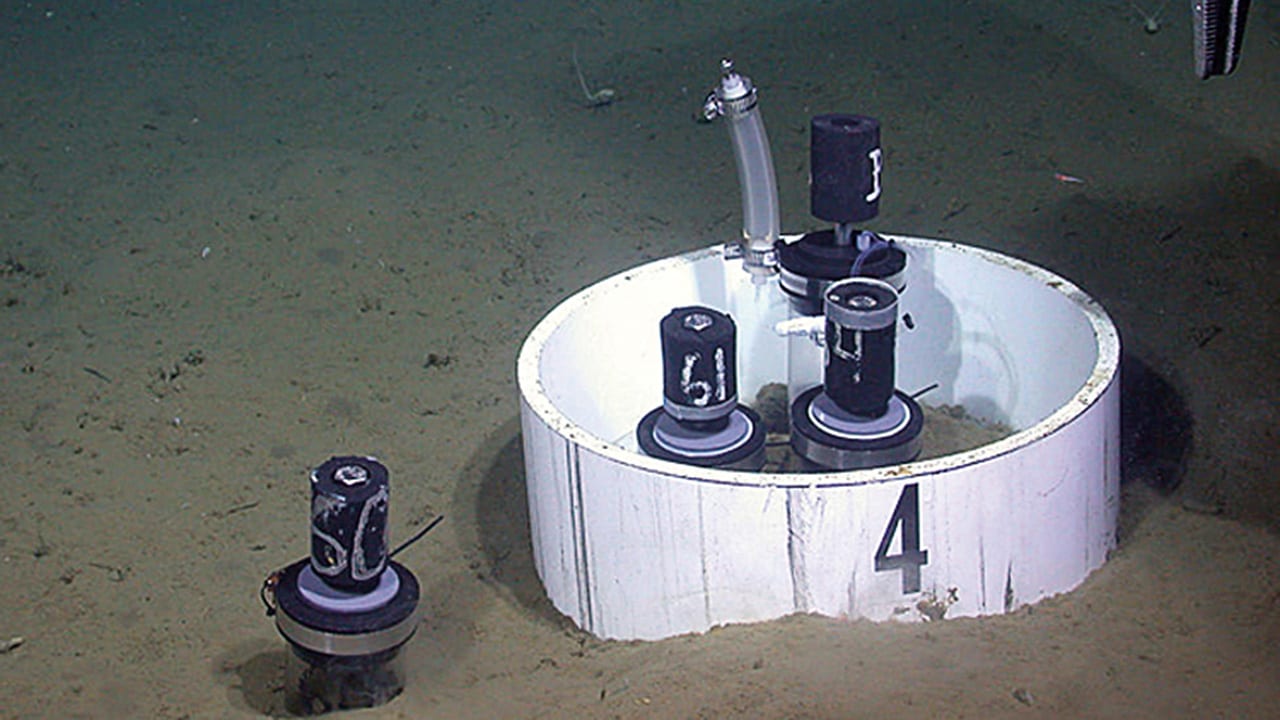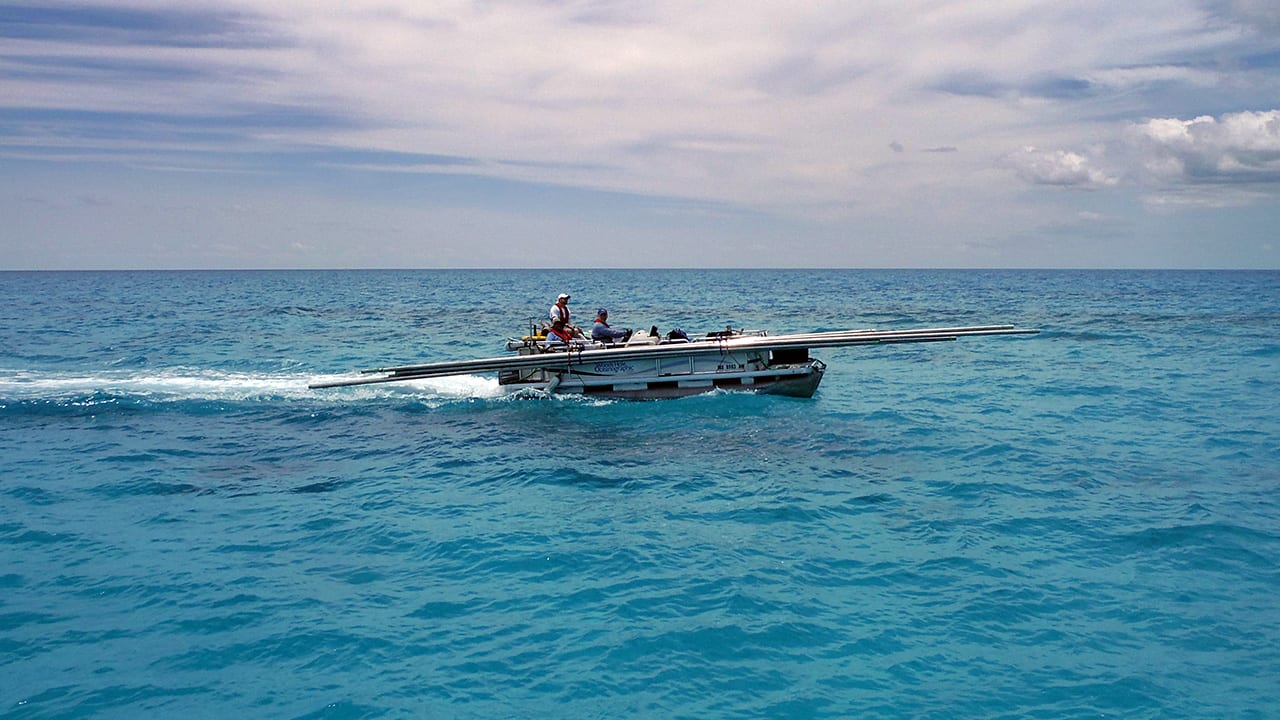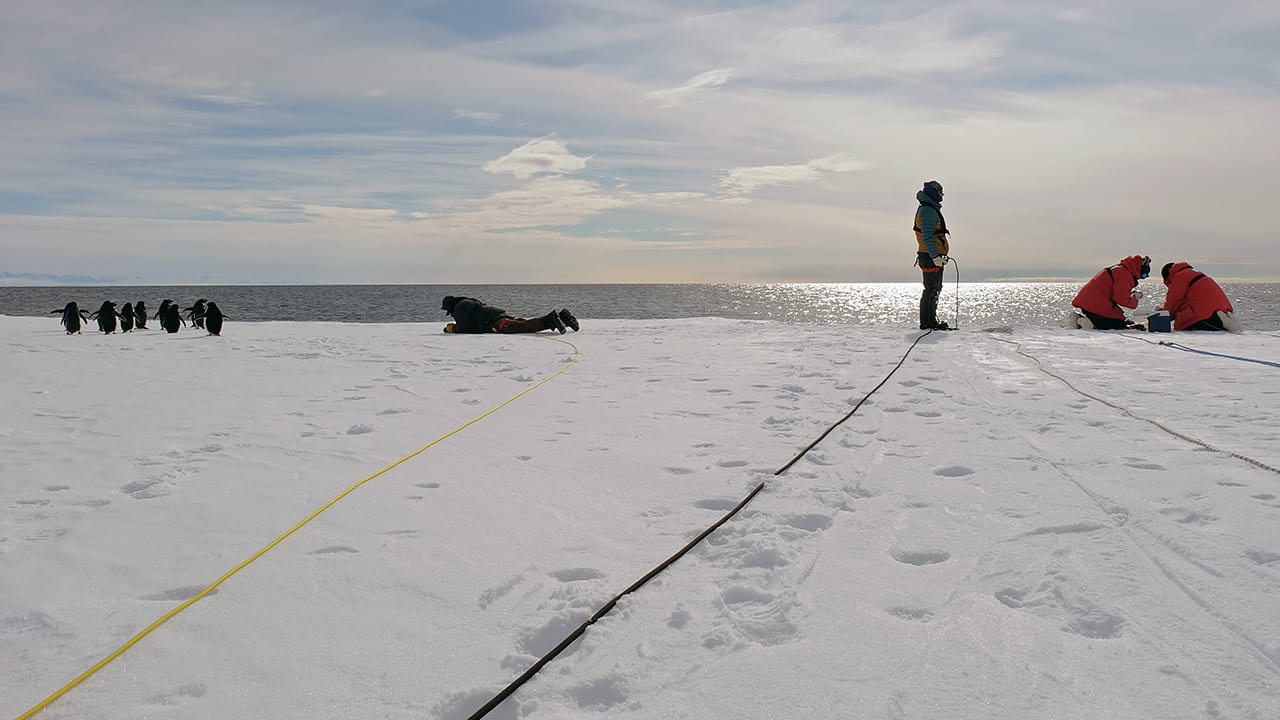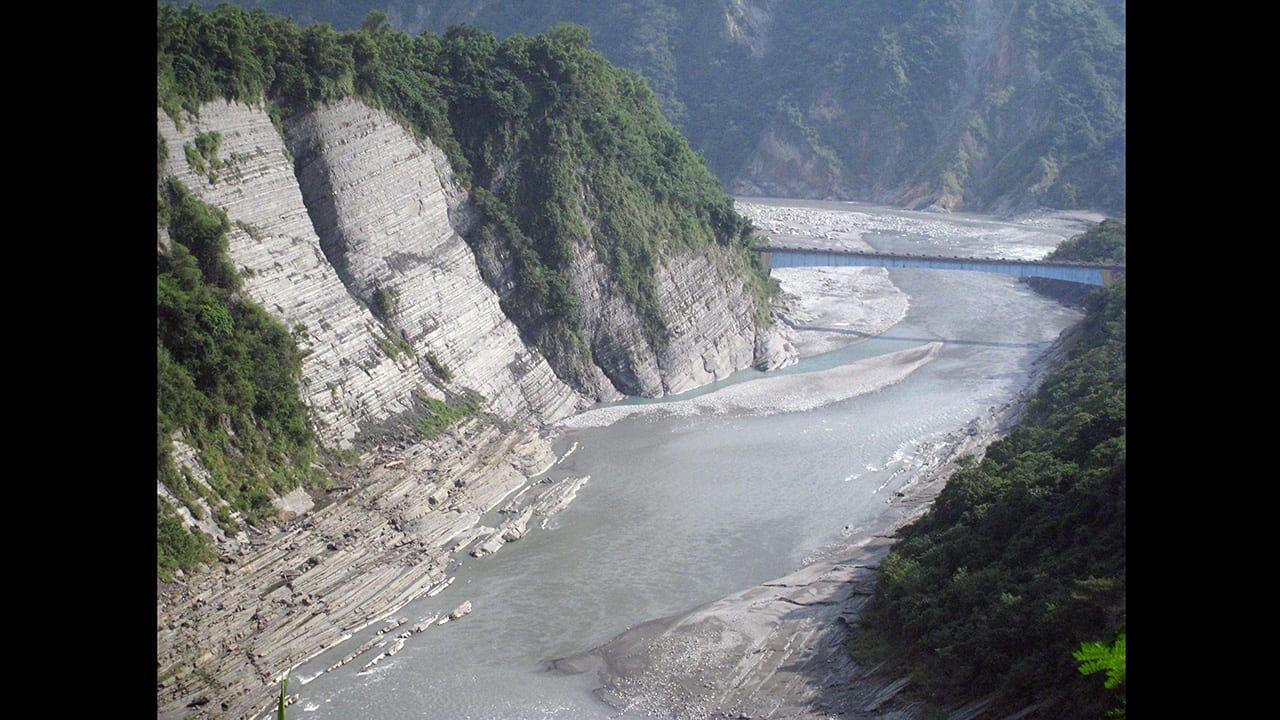Multimedia
A Dunk on the Dock
WHOI Senior Engineer Matt Heintz steadies the remotely operated deep-sea vehicle Jason as it undergoes testing off the WHOI dock in 2016, after a $2.4 million upgrade funded by the National Science…
Read MoreWhat’s New Penguin?
Penguins have been in the news a lot this spring. In March, WHOI seabird ecologist Stephanie Jenouvrier was part of a team of scientists and engineers who discovered of a “supercolony”…
Read MoreGetting a Feel for Ocean Science
This spring, WHOI geobiologist Joan Bernhard (left) and geologist Véronique Le Roux (right) introduced students at the Perkins School for the Blind to foraminifera, or forams: small, single-celled organisms that…
Read MoreSampling Coral Health
WHOI scientist Amy Apprill collects a small sample of an elkhorn coral in November 2017 during an unprecedented joint expedition with Cuban and American scientists to study the Gardens of the Queens in Cuba, one of…
Read MorePulling Out All the Stops
Preparing the human-occupied submersible Alvin for launch follows a carefully scripted, multi-page checklist that requires careful attention to detail in order to ensure the safety of everyone inside the sub…
Read MoreMeasuring Wave Energy
MIT-WHOI Joint Program graduate students Lizzie Wallace (left) and Rose Palermo prepare to deploy tiltmeters to measure the current produced by waves in Whale Bay, Bermuda, as part of a…
Read MoreAt Home in the Tentacles
A pink anemonefish peers out from the tentacles of a big anemone in Kimbe Bay, Papua New Guinea, where WHOI biologist Simon Thorrold was part of an international team that…
Read MoreSmorgasbord from the Seafloor
Scientists collected these organisms from the bottom of the Bering Sea on a 2009 expedition. These polychaete worms and one mollusk (the light pink loop in the center) provide food…
Read MoreCalm After the Storm
This kayak is souped up for science. Dubbed the JetYak, it’s motorized and remotely controlled, and it maneuvers easily in shallow water. WHOI scientist and engineer Peter Traykovski used it…
Read MoreA Curious Octopus
A curious octopus (Grimpoteuthis) peers into the viewport of the human-occupied deep-submergence vehicle Alvin, while the observers inside are undoubtedly peering out to look at it. Cirrate octopuses like this…
Read MoreIceberg Alley
A large iceberg breaks away from the Helheim Glacier and floats among slabs of pack ice in Sermilik Fjord along the southeastern coast of Greenland. The glacier, about 3 miles…
Read MoreWhere Hurricanes Are Born
Most Atlantic hurricanes begin to form over Africa, where hot, dry desert air meets cool, wet air over jungle regions farther south. In the seam between these high- and low-pressure…
Read MoreReady, Set, Research!
Partnership Education Program (PEP) student Kayla Jones (left) and guest student Hadley Clark geared up in the summer of 2017 to collect startlet sea anemones in Great Sippewissett Marsh, a…
Read MoreFood for Giants
Blue whales are the largest animals on Earth, often reaching 70 to 90 feet—the length of two school buses. But when it comes to food, these giant marine mammals rely…
Read MoreAhoy, Alvin!
WHOI able-bodied seaman Raul Martinez and SSSG technician Allison Heater prepare the human-occupied vehicle Alvin for a dive in March 2014. They communicate with the sub’s pilot through a sound-powered…
Read MoreFierce-Looking Fish
The ocean’s twilight zone teems with life. This little-known part of the ocean—200 to 1,000 meters (660 to 3,300 feet) below the surface—may have more fish biomass than in the…
Read MoreTsunami Warning System
Research engineer Lee Freitag and colleagues in the WHOI Acoustic Communications Group are developing a longe-range underwater sound-singalling system to warn of possible tsunamis. When a pressure sensor detects a…
Read MoreHome Together
WHOI’s research vessels Neil Armstrong (right) and Atlantis spend most of the year at sea and are rarely in their homeport of Woods Hole, Mass., at the same time. April…
Read MoreA Top 10 Worm
The remarkable squidworm was discovered by WHOI scientist Larry Madin and colleagues during a 2007 expedition to explore the deep waters of the Celebes Sea in the Philippines. The squidworm was…
Read MoreLingering Radioactivity
A research team led by WHOI scientists collects samples of groundwater from a well on Enewetak Atoll, one of the tiny Marshall Islands in the Pacific Ocean (from left, WHOI…
Read MoreSeafloor Experiment
This experiment on the seafloor examined whether pumping carbon dioxide to the bottom of the ocean might affect organisms living there. That is one proposed strategy to combat the buildup…
Read MoreA-coring We Will Go
Long metal tubes protrude from the bow and stern of a research boat headed toward a blue hole off Long Island in the Bahamas. Scientists lower the tubes to the…
Read MorePerils of Polar Research
Field safety personnel keep a careful eye on potentially dangerous macrofauna (also known as penguins) while WHOI biologist Sam Laney (far right) collects plankton samples at the edge of sea…
Read MoreEroding Away
Scientists have long known that mountain ranges can draw carbon dioxide out of the atmosphere: As rocks are exposed to the air by erosion, minerals chemically react with carbon dioxide…
Read More
